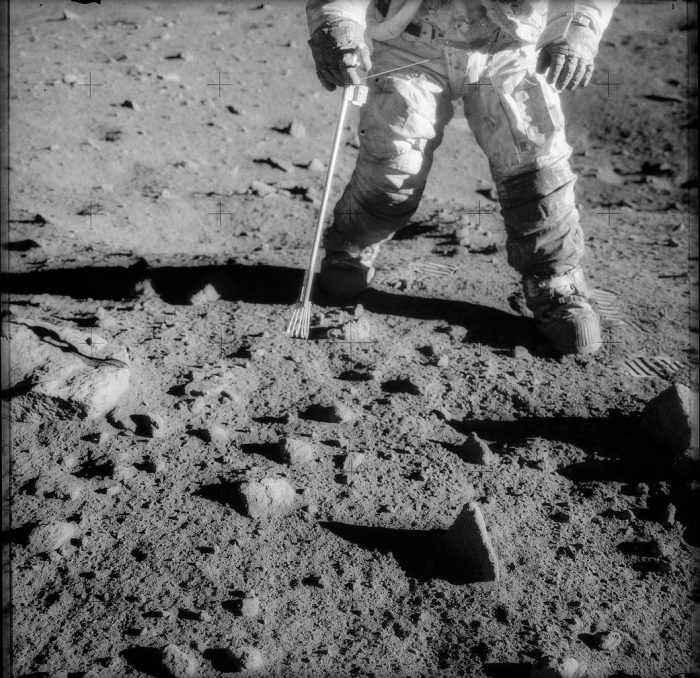Usually here at OWLconnected, we like to give you a balanced mix of news. From Animals to sports, world events to fossils, activism to history ... and strange things in between! Because when the world has so much going on you can't play favourites.
We mention this because only yesterday we posted about NASA's New Horizons probe reaching Ultima Thule (a.k.a. the most distant object visited by a human-made vehicle). Normally, we would put a little space (get it!) between galactic posts such as these. But wouldn't you know it, China goes and lands a probe—Chang'e-4 (say CHANG-uh four) on the Moon!
So strap yourselves in, junior astronauts, because this was no ordinary lunar landing. It's time to go to ...
THE FAR SIDE.
The 'new' Moon

Charles Conrad, Jr. takes lunar samples during Apollo 12 in November 1969. (NASA)
Humans sending a probe to the Moon might not seem all that groundbreaking. After all, we've been doing this since the 1960s. In total, before yesterday, 18 missions had landed on the moon's surface. So why is this new probe so noteworthy?
For one, of those 18 previous lunar landing missions, only one was by either the United States or Russia. The only other country? China, whose Chang'e-3 probe landed in December 2013. In other words, China is a newcomer to the world of space exploration. And it is eager to catch up to the lofty heights of the American and Russian programs.
But even more significant is where this probe has landed. The so-called far side of the Moon! You see, all 18 of those other missions touched down on the near side of our space neighbour. Chang'e-4, however, is the first one to venture to the other side. The one that we never see. And why is that so?
Locked in
No matter the time or perspective of where we're looking, earthlings always see the same side of the Moon. (NASA)
The Moon is tidally locked to Earth. Simply put, it doesn't spin around on its own axis. As it orbits Earth, our planet's gravity keeps the same side facing us at all times. Because probes are controlled by radio waves, this makes landing on the far side more difficult—we can't send radio signals to a probe if those signals are being blocked by the Moon itself!
The Chinese space program got around this by putting a satellite, Queqiao, in orbit around the Moon that is in a position to both communicate with scientists on Earth and Chang'e-4. Remember what we were saying about China being eager to catch up? They have now officially done something no human space program has ever accomplished. Your move, NASA! (What's that? They sent a probe into interstellar space? Two of them? Okay, never mind ...)
Volcanic basin
As for the mission itself, Chang'e-4 landed in South Pole-Aitken Basin. Scientists believe that this is where an ancient meteor smashed into the Moon and went deep into its mantle. This would've sent molten rock up to the surface, where it hardened. How different is this to the Moon's rocks elsewhere? Hopefully, Chang'e-4 will let us know!
And that's just something that we expect to learn about. In truth, who knows what to expect from humanity's first probe to the far side of the Moon? We're excited to find out!
 A photo of the far side of the Moon's surface, as taken by Chinese probe, Chang'e-4. (ESA/CNSA)
A photo of the far side of the Moon's surface, as taken by Chinese probe, Chang'e-4. (ESA/CNSA)










I think it is interesting and I want to know if there’s life on mars or the moon